Just a few words about a fascinating little corner of the arboriculture world known as tree shaping or arborisculpture, the training of living trees into sculptures, furniture, buildings and other structures. Tree shaping has seldom implemented although the principle is the same as the far more common practice of espalier, which is a tree or shrub trained to grow flat against a frame or wall in a garden, often for increasing fruit production. Tree shaping has little practical application but it is nonetheless interesting as a creative expression of the wonder, strength and beauty of trees and how humans can engage with them and the broader natural world.
The field’s greatest visionary was Arthur Wiechula (German, 1867 – 1941) who envisioned growing entire buildings and researched the physiology of the necessary grafting.
Smaller works such as chairs and individual sculpted trees are documented since at least the 19th century, with Germany perhaps the chief center of activity, followed by the UK and US. Germany has most of the world’s living buildings – a couple of churches and a four story pavilion built with the aid of metal scaffold. India, however, has largest, oldest and most functional living structures. In the state of Meghalaya are footbridges, formed of living roots of Ficus trees, that reportedly are centuries old and able to support 50 people.
The four-story Platanenkubus [sycamore or plane-tree cube] is in Stuttgart. The supporting frame will be dismantled in the future when the trees are strong enough; the only metal remaining will be the gangways. University researchers conducted extensive studies on how to integrate metal and living tree elements so the wood grows around metal pipes or rods.
Further Information
Sanfte Structuren [Soft Structures] – team that has made many living gazebos and huts
Bureau Baubotanik [Botanical Building] – team that has done about 10 projects
Treeshapers – overview of the subject
30 more links on living buildings and arborisculpture, here.
University of Stuttgart Bautbotanik research and design project
Naturbauten [Nature Building] – large permaculture garden/farm with a dozen or two living structures. English version of site has much less material, here.
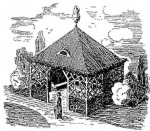


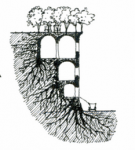


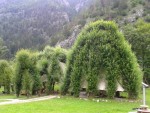


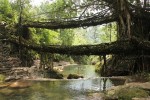
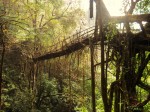

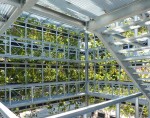
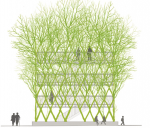
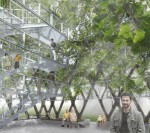
Hello I am currently looking for an English copy of Arthur Wiechula’s Developing Houses from Living Trees. However I can not seem to find a copy, English or otherwise, anywhere online. In fact I am finding it difficult to find any of his books. Where can one find this book?
It has never been translated into English. There is a reprint of the German original currently in print but be warned, (1) it is a facsimile which means that like the original it’s all in blackletter, the type style more commonly called gothic (like the title of the New York Times newspaper; the German word is Fraktur), which even most native Germans have a lot of trouble reading; and (2) I am 99.99% sure they greatly reduced the size. It’s only 4×6″ and the letters are about the tiniest it’s possible to have in a book, so a person would hardly even be able to make out a few words here and there unless they have advanced German and blackletter-reading skills. Also (3) it is printed on cheap newsprint and at 18 euros is a bit steep for a low-quality mini-reprint. It doesn’t have many illustrations, just a dozen or two. For me personally it’s not worth the money.
http://www.packpapierverlag.de/?product=wiechulawachsende-hauser